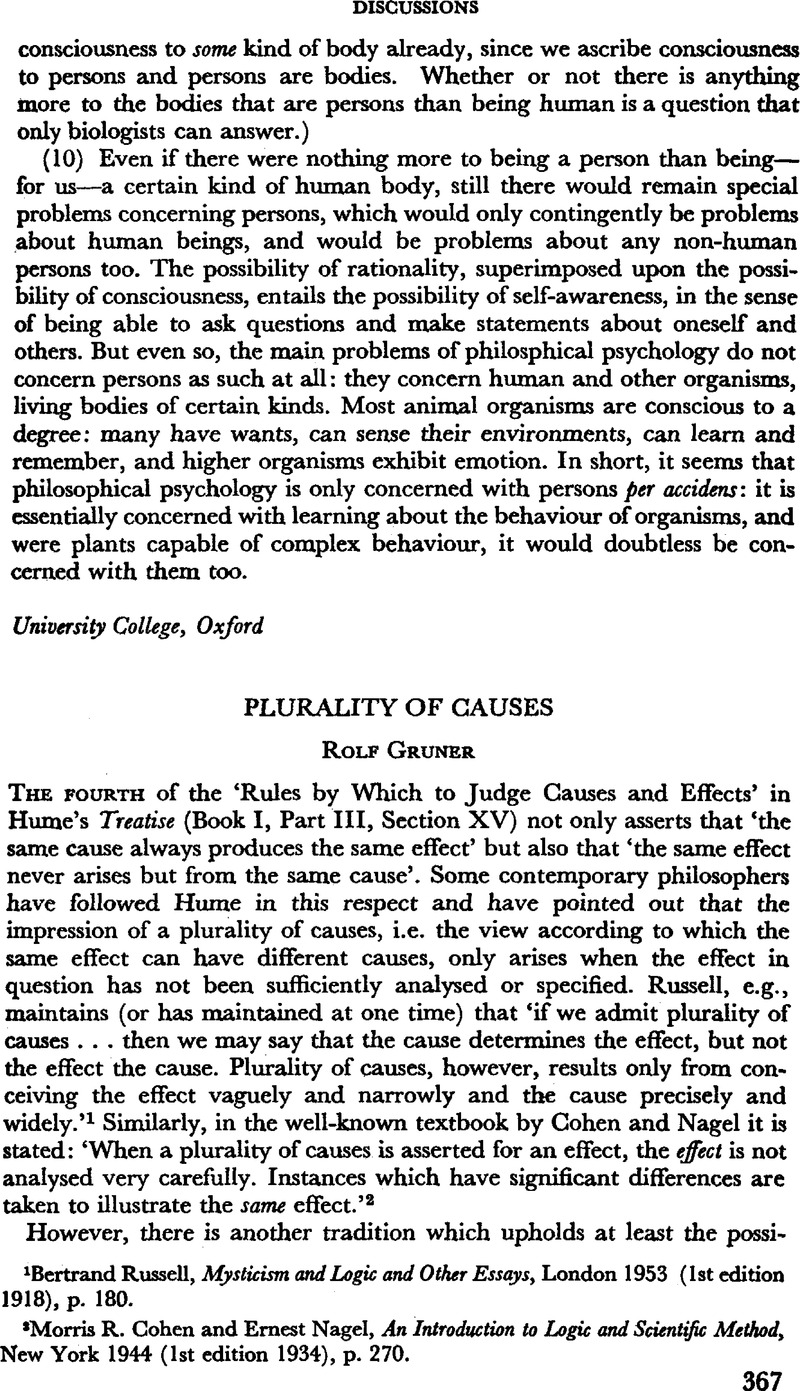No CrossRef data available.
Published online by Cambridge University Press: 25 February 2009

page 367 note 1 Russell, Bertrand, Mysticism and Logic and Other Essays, London 1953 (1st edition 1918), p. 180.Google Scholar
page 367 note 2 Cohen, Morris R. and Nagel, Ernest, An Introduction to Logic and Scientific Method, New York 1944 (1st edition 1934), p. 270.Google Scholar
page 368 note 1 E.g. Mario Bunge, Causality, The Place of the Causal Principle in Modern Science, Reprint, Cleveland & New York 1963, pp. 123–24. Pap, Arthur, An Introduction to the Philosophy of Science, London 1963, pp. 257–58.Google Scholar
page 368 note 2 Following Bunge, op. cit., pp. 121 ff., it is useful to distinguish conjunctive and disjunctive plurality or multiplicity of causes so that no confusion can arise. Conjunctive plurality, i.e. the fact that more than one condition must be satisfied conjointly in order that something can take place, is non-controversial while the matter is different in the case of disjunctive plurality, as I have shown above (where when I spoke of plurality the disjunctive kind was, of course, referred to).
page 370 note 1 Pap, op. cit., pp. 255–57, makes the same point although in different words. What I call ‘relatively necessary condition’ he referes to as ‘conditionally necessary’ or ‘contributing condition’. See also Nagel, Ernest, The Structure of Science, New York, 1962 pp. 559–60Google Scholar, who speaks of ‘contingently necessary conditions’.
page 370 note 2 I do not deny, of course, that the customary definition of some words includes part of the cause, e.g. in the case of ‘rust’ the definition of which in the Concise Oxford Dictionary includes ‘formed on iron or steel by oxidation esp. as effect of moisture’. But this does not affect the point made here, namely that for purposes of causal analysis we cannot include causal features in the definition of the effect.
page 373 note 1 Scriven, Michael, ‘Causes, Connections and Conditions in History’, Dray, William H. (Ed.), Philosophical Analysis and History, New York 1966, pp. 240–264.Google Scholar
page 374 note 1 Scriven, op. cit., p. 261.